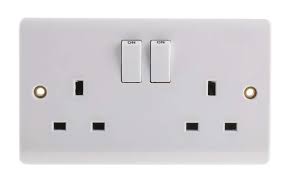Mar. 19, 2024
When wiring, it's common knowledge that left is neutral and right is live. However, many wonder about the consequences of reversing the connection. Let's delve into it.

According to annual data on electrical accidents, the majority involve right-handed individuals. In cases where plugs are difficult to remove, people often extend their thumb over the socket for leverage. If the plug is eventually pulled out, leaving a gap between it and the panel, those with soft nails risk bending them, potentially touching the electrode and receiving an electric shock. Hence, some individuals experience electric shocks when interacting with sockets.
By adhering to a left-neutral-right-live wiring scheme, electricians can quickly identify and differentiate between neutral and live wires during installation or repairs. This prevents the mixing of wires, which could lead to circuit malfunctions. Additionally, it ensures that switches accurately cut off the live wire, promoting safety.
Just as electrical wiring follows a left-neutral-right-live pattern, faucets often have hot water on the left and cold water on the right. Similarly, public restrooms often designate the left side for males and the right side for females. Therefore, the left-neutral-right-live convention is a societal standard.
The heart is situated on the left side of the chest. Ventricular fibrillation, a leading cause of death following electric shock, occurs when the heart's rhythm becomes irregular. Researchers indicate that 67% of the current passing through a person's body from the left hand to both feet travels through the heart. In contrast, only 3.7% travels to the heart when passing from the right hand to both feet, and 3.3% travels from right to left. Similarly, only 0.4% travels from left foot to right foot. Therefore, if the left hand receives an electric shock, it poses a higher risk to the heart compared to shocks received by other body parts.
In summary, the left-neutral-right-live wiring design reduces the likelihood of electric shocks affecting the heart. While some may consider correct wiring insignificant, it's crucial for safety. Whether or not one is an electrician, understanding these concepts is essential for everyone's well-being.
Previous: None
Next: None
Related Articles
If you are interested in sending in a Guest Blogger Submission,welcome to write for us!
All Comments ( 0 )